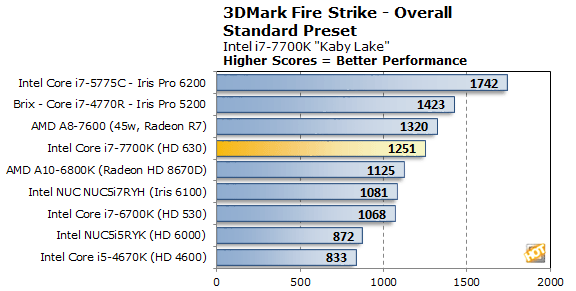Intel Core i7-7700K And Z270 Chipset Review: Kaby Lake Hits The Desktop
For our next series of tests, we moved on to some game-related metrics with Crysis and 3DMark, specifically the physics benchmark that's part of the Fire Strike test. When testing processors with Crysis, we drop the resolution to 1024x768, and reduce all of the in-game graphical options to their low preset values to isolate CPU and memory performance as much as possible. However, the in-game effects, which control the level of detail for the games' physics engines and particle systems, are left at their maximum values, since these actually do place a load on the CPU rather than GPU. For the 3DMark Physics test, we simply create a custom 3DMark run consisting solely of the physics test, which is CPU dependent, and report the results...
|
|
|


|
We also ran some high-resolution game and graphics tests on the Core i7-7700K using 3DMark and Bioshock too see what the integrated, on-die Intel HD 630 graphics engine can do. We used 3DMark Fire Strike's standard preset, but in Bioshock, we used the high-quality preset with a 1080p resolution. Bioshock is a somewhat older title at this point, but it will give you an idea as to where Kaby Lake's on-die graphics fall in relation to other integrated solutions.

As you can see, the Intel HD 630 engine in Kaby Lake is only slightly faster than the HD 530 graphics in Skylake. The graphics architecture is the same in both processors, however, so the differences can be attributed to frequency and driver differences.




Once again, there are relatively minor differences in performance in all of the tests between the Intel HD 630 graphics in Kaby Lake and the HD 530 graphics in Skylake. The higher clocks of Kaby Lake give it the advantage, but we're not talking about generational leaps in performance here.






